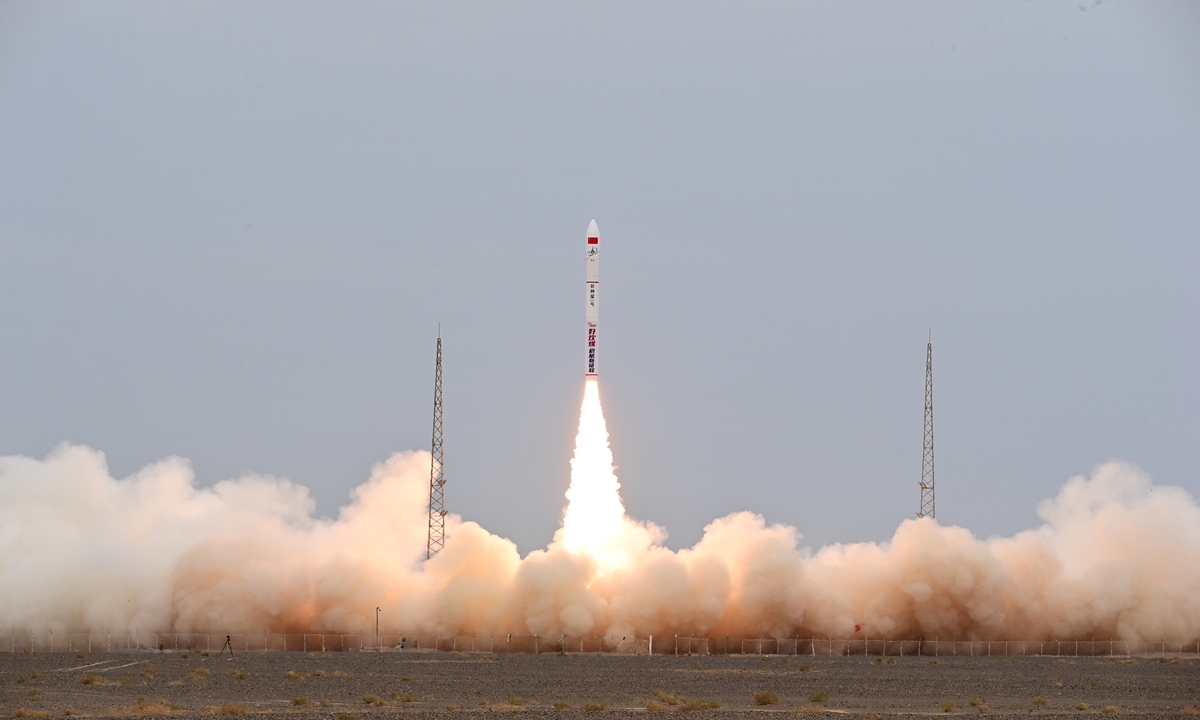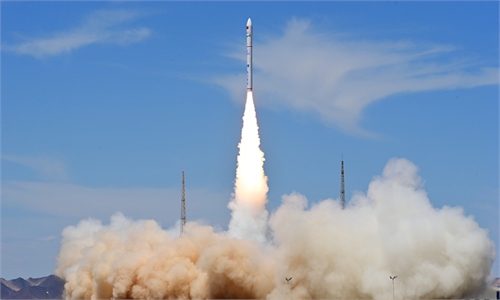
Domestic carrier rocker developer Galactic Energy launched its seventh Ceres 1 rocket on Thursday, sending seven satellites into orbit from the Jiuquan Satellite Launch Center in Northwest China. Photo: Courtesy of Galactic Energy
China's commercial aerospace sector has been in the fast lane since the start of this year, marked by high-density rocket launches and cutting-edge satellites sent into orbit. Private firms, a rising force in the nation's space industry, are striving to satisfy market demand, thus shaping a mature commercial loop.
Domestic carrier rocket developer Galactic Energy launched its seventh Ceres 1 rocket on Thursday, sending seven satellites into orbit, the latest effort by a Chinese private firm to expand its capabilities in rocket research and development (R&D) and launches.
It was the second launch within a month for Galactic Energy and the seventh successful flight for the rocket model.
The Ceres 1 rocket has served 15 commercial satellite clients, sending 28 satellites into orbit that offer support for Earth observation, meteorological monitoring, popular science education and other functions, according to a statement the company sent to the Global Times.
The company has planned a high-density delivery and launch cycle for the second half of the year, and it aims for three launches in August including one launch at sea at the end of the month, a PR representative from the firm told the Global Times.
Rocket companies need to achieve high-density launches for their products to mature from the lab to mass production.
Prior to Thursday's launch, the Beijing-based start-up had accomplished six consecutive launches after making its debut flight in November 2020 from the Jiuquan Satellite Launch Center in Northwest China's Gansu Province.
The Ceres 1 is a four-stage launch vehicle independently designed by Galactic Energy. Solid engines are used in the first, second and third stages, while the fourth features an advanced liquid fuel.
The company is also conducting R&D on liquid rockets.
In June, it announced that the Pallas 1, a larger, reusable liquid-propellant rocket model, had completed the inter-stage separation test, verifying the correctness of the separation process.
With consecutive successful launches on track, private firms are entering a new R&D cycle and quickly shaping a commercialization loop, expert said.
Huang Zhicheng, a Chinese expert in aerospace science and technology, told the Global Times that high-quality private aerospace enterprises have demonstrated strong capabilities of innovation and development potential over the past few years, and they have become an important force in promoting the country's commercial aerospace innovation.
"They are quickly catching up with state-owned players, which have a longstanding cumulative advantage. In some cases, they're even surpassing state-owned players," Huang noted.
In July, another private rocket firm - LandSpace - launched the world's first liquid oxygen, liquid methane carrier rocket from Jiuquan. The launch put China at the forefront of the global space race for methane-based rockets.
Methane-liquid fuel is cleaner, safer and cheaper than other choices, and it's viewed as a suitable propellant for reusable rockets, which multiple rocket firms are aiming for.
"With the improvement of the policy environment and the business getting mature, private players will have scope for innovation," Huang said.
In China, the environment for commercial aerospace development continues to improve. It is gradually shifting from a mode dominated by basic manufacturing and product R&D to a new stage driven by the market and applications, Yuan Jie, chief executive officer of the China Aerospace Science and Industry Corp, said at the 9th China (International) Commercial Aerospace Forum held in Wuhan, capital of Central China's Hubei Province in July.
With the domestic economy on a recovery path in the post-COVID era, the commercial space sector has shown upward momentum, according to a 2022 China Commercial Aerospace Industry Investment Report released in April.
Since 2015, which is deemed as the starting point of the domestic commercial space sector, the number of registered and operating companies in China has reached 433, covering various fields such as rocket manufacturing, satellite R&D and space technology exploration, data from the report showed.




